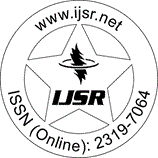Downloads: 6
India | Obstetrics and Gynecology | Volume 14 Issue 3, March 2025 | Pages: 1206 - 1210
Maternal and Fetal Outcomes of Various Methods of Induction of Labor in a Tertiary Care Centre
Abstract: Background: Induction of labor refers to iatrogenic stimulation of uterine contractions before the onset of spontaneous labor as a therapeutic option when benefits of expeditious delivery outweigh the risks of continuing the pregnancy.1 According to the National Center for Health Statistics, the overall rate of labor induction was 31.4% in 2020 compared to 27.1% in 2018 and 9.6% in 1990.2The rates of induction of labor (IOL) are rising worldwide with arate of 20?30% in developed countries at present .2 However, this procedure is not free of risks, which include an increase in operative vaginal or caesarean delivery and excessive uterine activity with risk of fetal heart rate abnormalities3. Material and Methods: An observational Study was conducted at the department of Obstetrics and Gynaecology, Government Medical College, Nagpur with a sample size of 140 patients including all the preterm and term patients admitted in obgy department and were indicated for induction of labor with a study duration of 30 months. Data was entered in MS Excel worksheet, coded and analysed with the statistical software, STATA, version 10.1, 2011 by StataCorp, Texas (USA). Results: There are multiple methods of induction of labor, including mechanical and pharmacological ones and also various standard guidelines on induction of labor. Both of the pharmacological agents, oxytocin and Misoprostol are effective in induction of labor, reducing Caesarean sections and achieving vaginal births, however the risk of hypertonic contractions and hyperstimulations leading to fetal distress was much higher among those involving use of misoprostol particularly among those induced with higher doses of Misoprostol making oxytocin a safer option.
Keywords: IOL, Induction of labor, American college of Obstetrician and Gynecologists, Maternal and fetal outcome
How to Cite?: Dr. Priya Jagwani, Dr. Jitendra Deshmukh, "Maternal and Fetal Outcomes of Various Methods of Induction of Labor in a Tertiary Care Centre", Volume 14 Issue 3, March 2025, International Journal of Science and Research (IJSR), Pages: 1206-1210, https://www.ijsr.net/getabstract.php?paperid=MR25318190610, DOI: https://dx.doi.org/10.21275/MR25318190610
